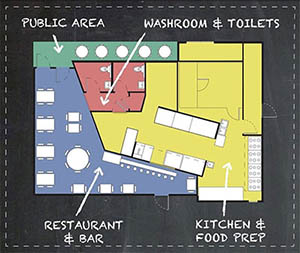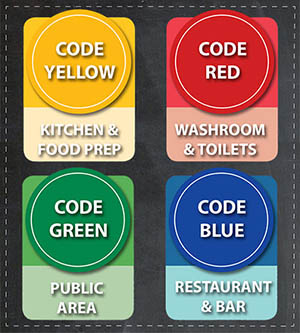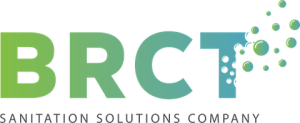A severe concern of the professional commercial cleaning business is cross-contamination. One of the ways we work to eliminate this concern in the facilities we service daily is with a colour-coded cleaning system. These tools provide superior cleaning and reduce the risk of spreading infections and bacteria via cross-contamination. Microfiber products are proven to remove 99.9 per cent of microbes and 80 per cent more dust and dirt than traditional mops.

The idea with colour coding is that cloths, mops and brushes are assigned a different colour, each representing a specific use. By clearly establishing which colours are to be used for what application, workers are less likely to cross-contaminate. You can also delineate which colour should be used for a specific area in a facility – such as blue cloths for general purpose cleaning in low-risk areas, green for general food preparation and processing areas, red for high-risk areas including toilets, urinals and floors, yellow or orange for back-of-house cleaning, and black or grey for front-of-house cleaning.
In facilities such as hospitals and nursing homes, restaurants, schools and colleges, and office buildings, sickness can spread rapidly through cross-contamination. If a janitor, cleaning staff member or custodian touches something that has been infected or contaminated, and then uses a cloth or mop and transfers it to another surface, germs can be quickly spread.
Incredibly, even though a restroom represents just 5% of a typical office building’s space, it can contain more than 80% of the germs in the entire location. Coloured micro-fibre wipes and tools can reduce spreading germs dramatically and prevent contagions.
The most crucial facility where this is beyond critical is in the healthcare industry. High-profile incidents of hospital-acquired infections have increased, causing our industry to focus on developing systems to reduce this severe issue. Bottom line, you don’t want to mop a floor in a room where patients have been treated and then use that same mop to clean a bathroom floor or a workroom.
Color-coding also makes it easier to teach the systems to workers and ultimately provide a much more professional and consistent result, while lowering the chance of spreading germs. Most importantly, this technique streamlines procedures and makes consistent cleaning more effective, especially in the area of cross-contamination.

HOW SHOULD I USE COLOUR CODED CLEANING?
You will need to assign your red, blue, green and yellow colours to four different areas of your premises. These areas are:
- Public areas – such as lobbies, receptions and hallways
- Washroom and toilets – this can include shower rooms and bathrooms
- Restaurant and bar – including dining areas and cafe lounge spaces
- Kitchen and food preparation areas – any kitchen, food station or area where food is kept and prepared
For this system to work, you will need to assign a different mop and other cleaning equipment to each area. For example, you would not want to clean the floors of a kitchen with a mop that has already been used to clean the bathroom floors.
This simple but hygienic cleaning system can be applied to any cleaning equipment that is used in each area, from mops and brushes to cloths and gloves.

WHICH COLOURS SHOULD I USE IN EACH AREA?
The colour coordination of cleaning products can vary from business to business, and the system you choose is entirely up to you. However, the guide below is the most broadly accepted system that the majority of catering establishments adhere to:
- GREEN – Public areas
- RED – Washrooms and toilets
- BLUE – Restaurant and bar areas
- YELLOW – Kitchen and meal prep areas
The colour you assign to each area is your choice, so you need to make sure your staff members are trained on the system you choose.
The use of colour-coded cleaning equipment is beneficial and has been widely adopted by the catering industry as well as offices, factories and the retail sector.
It can help to maintain a high standard of food quality and hygiene while making sure that surroundings are safe for both customers and colleagues. Employing a coded colour system in your workplace will make cleaning easy and efficient, increasing general hygiene and cleanliness.
Remember, excellent cleaning is not only about how things look on the surface, but also the science of cleaning. The best cleaning companies understand issues like disease and infection reduction and cleaning for health and safety. A well-trained cleaning service will not only keep your facility sparkling but will also keep your people and customers healthier.
Recent Posts
Could the standard of cleaning you are receiving be improved?
If you are not happy with your current cleaning contractor's service, don't just put up with it. Get yourself a company who will go the extra mile! Contact us now to help bring the standard of...
COVID-SECURE Disinfection cleaning & fogging services - Johannesburg. Fogging is a quick way to disinfect large areas and allow them to be returned to everyday use. We use a fogger machine...

